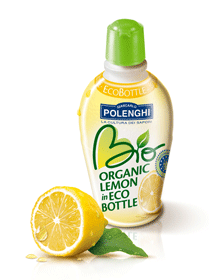Italian fruit juice bottler Polenghi expects to use PLA, a plant-based plastic, in up to 10 million extrusion blowmolded bottles. For the brand owner, the switch is proving relatively easy on its capital budget, with no need to change machinery or tooling.
October 8, 2010
Italian fruit juice bottler Polenghi expects to use PLA, a plant-based plastic, in up to 10 million extrusion blowmolded bottles. For the brand owner, the switch is proving relatively easy on its capital budget, with no need to change machinery or tooling.
This will be the first time polylactic acid (PLA) bottles have been
|
commercially extrusion blowmolded in Europe, according to NatureWorks LLC, the supplier of the Ingeo brand of PLA. PLA is derived from plant starch. Polenghi is replacing polyethylene in this package. "We are extremely proud of the technical achievements that led to the development of this low-carbon-footprint Eco bottle, the first of its kind in Europe," said Marco Polenghi, sales director of Polenghi LAS. "This bottle and shrink-sleeve label, both made from renewably sourced Ingeobioplastic, presents us with the opportunity to differentiate our Bio organic lemon juice." Polenghi Bio lemon juice packed in the PLA bottles is now available in Italy and will soon be stocked in stores throughout Europe.
The company did not need to make adjustments to its blowmolding tooling nor to its plasticizing screws to process the PLA, it replied in response to questions from MPW. The only investment made is for a cutting/trimming device for the parisons.
Changes of course were made to processing conditions and line settings; this is part of Polenghi's know-how, it says.
A shampoo bottle marketed in Japan was the first extrusion blowmolded package commercially marketed using the Ingeo material.
About the Author(s)
You May Also Like



